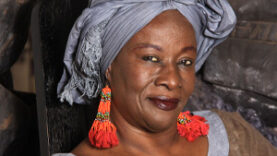
Polygame – Episode 419 – Saison 2
Scientific studies classify humans as “mildly polygynous” or “monogamous with polygynous tendencies.”[18][19][20][21] As mentioned above, data from 1960 to 1980 in the Ethnographic Atlas Codebook indicated that polygamy was common.[55] A separate 1988 review examined the practices of 849 societies from before Western imperialism and colonization. The review found that 708 of the societies (83%) accepted polygyny. Only 16% were monogamous and 1% polyandrous.[56] Subsequent evidence in 2012 found that polyandry (in which women have multiple male partners) was likely in pre-history; it also identified 53 communities studied between 1912 and 2010 with either formal or informal polyandry, indicating that polyandry was more common worldwide than previously believed. The authors found that polyandry was most common in egalitarian societies, and suspected contributors to polyandry included fewer men (due to the existence or threat of high adult male mortality or absence/travel) and higher male contributions towards food production.[6] Polyandry still appears to occur in the minority of societies. Regardless of the type of polygamy, even when polygyny is accepted in the community, the majority of relationships in the society are monogamous in practice – while couples remain in the relationship, which may not be lifelong.[17] In many historical communities, serial monogamy may have been the accepted practice rather than a lifelong monogamous bond. How monogamy is defined when it comes to accepted sexual activity outside of the relationship, however, may differ by society.[17]
Recent anthropological data suggest that the modern concept of life-long monogamy has been in place for only the last 1,000 years.[57] Genetic evidence has demonstrated that a greater proportion of men began contributing to the genetic pool between 5,000 and 10,000 years ago, which suggests that reproductive monogamy became more common at that time.[24] This would correspond to the Neolithic agricultural revolution. During this time, formerly nomadic societies began to claim and settle land for farming, leading to the advent of property ownership and therefore inheritance. Men would therefore seek to ensure that their land would go to direct descendants and had a vested interest in limiting the sexual activities of their reproductive partners. It is possible that the concept of marriage and permanent monogamy evolved at this time.[25]
Other scientific arguments for monogamy prior to 2003 were based on characteristics of reproductive physiology, such as sperm competition,[58] sexual selection in primates,[59] and body size characteristics.[60] A 2019 synthesis of these and other data found that the weight of the evidence supports a mating bond that may include polygyny or polyandry, but is most likely to be predominantly serial monogamy.[17]
More recent genetic data has clarified that, in most regions throughout history, a smaller proportion of men contributed to human genetic history compared to women.[24][61] Assuming an equal number of men and women are born and survive to reproduce, this would indicate that historically, only a subset of men fathered children and did so with multiple women (and may suggest that many men either did not procreate or did not have children that survived to create modern ancestors). This circumstance could occur for several reasons, but there are three common interpretations:
- The first interpretation is a harem model, where one man will out-compete other men (presumably through acts of violence or power) for exclusive sexual access to a group of women. Groups of women could be related or unrelated. This does not seem to reflect real-world observations in more modern polygyny societies, where the majority of individuals seldom have more than one partner at a time.[17]
- Second, it may suggest that some men had either more sex or more reproductive success with multiple women simultaneously; this could be caused by sexual liaisons outside of a lifelong “monogamous” relationship (which may or may not be acceptable in their society), having multiple committed partners at once (polygyny), or simply sexual reproduction with multiple partners entirely outside of committed relationships (i.e., casual sex without relationships or pair-bonding).
- Third, it may suggest that some men were more likely than other men to have a series of monogamous relationships that led to children with different women throughout the man’s life (serial monogamy).[17] There are a variety of explanations for this that range from the woman’s decisions (the man’s perceived attractiveness or ability to produce food) to the man’s (social or coercive power).
The serial monogamy interpretation of genetic history would be congruent with other findings, such as the fact that humans form pair bonds (although not necessarily for life) and that human fathers invest in at least the early upbringing of their children.[17] Serial monogamy would also be consistent with the existence of a “honeymoon period”, a period of intense interest in a single sexual partner (with less interest in other women) which may help to keep men invested in staying with the mother of their child for this period.[62] When reciprocated, this “honeymoon period” lasts 18 months to three years in most cases.[63][64] This would correspond to the period necessary to bring a child to relative independence in the traditionally small, interdependent, communal societies of pre-Neolithic humans, before they settled into agricultural communities.[24]
While genetic evidence typically displays a bias towards a smaller number of men reproducing with more women, some regions or time periods have shown the opposite. In a 2019 investigation, Musharoff et al. applied modern techniques to the 1000 Genomes Project Phase 3 high-coverage Complete Genomics whole-genome dataset.[65] They found that the Southern Han Chinese had a male bias (45% female, indicating that women were likely to reproduce with multiple men). This region is known for its lack of a concept of paternity and for a sense of female equality or superiority.[66] The Musharoff study also found a male bias in Europeans (20% female) during an out-of-Africa migration event that may have increased the number of men successfully reproducing with women, perhaps by replenishing the genetic pool in Europe. The study did confirm a more typical female bias in Yorubans (63% female), Europeans (84%), Punjabis (82%), and Peruvians (56%).[67]
Religious attitudes towards polygamy
[edit]
Buddhism
[edit]
Buddhism does not regard marriage as a sacrament; it is purely a secular affair. Normally Buddhist monks do not participate in it (though in some sects priests and monks do marry). Hence marriage receives no religious sanction.[68] Forms of marriage, in consequence, vary from country to country. The Parabhava Sutta states that “a man who is not satisfied with one woman and seeks out other women is on the path to decline”. Other fragments in the Buddhist scripture seem to treat polygamy unfavorably, leading some authors to conclude that Buddhism generally does not approve of it[69] or alternatively regards it as a tolerated, but subordinate, marital model.[70]
Polygamy in Thailand was legally recognized until 1935. Polygamy in Myanmar was outlawed in 2015. In Sri Lanka, polyandry was legal in the kingdom of Kandy, but outlawed by British after conquering the kingdom in 1815.[68] When the Buddhist texts were translated into Chinese, the concubines of others were added to the list of inappropriate partners. Polyandry in Tibet was traditionally common, as was polygyny, and having several wives or husbands was never regarded as having sex with inappropriate partners.[71] Most typically, fraternal polyandry is practiced, but sometimes father and son have a common wife, which is a unique family structure in the world. Other forms of marriage are also present, like group marriage and monogamous marriage.[38] Polyandry (especially fraternal polyandry) is also common among Buddhists in Bhutan, Ladakh, and other parts of the Indian subcontinent.
Celtic traditions
[edit]
Some pre-Christian Celtic pagans were known to practice polygamy, although the Celtic peoples wavered between it, monogamy and polyandry depending on the time period and the area.[72] In some areas this continued even after Christianization began, for instance the Brehon Laws of Gaelic Ireland explicitly allowed for polygamy,[73][74] especially amongst the noble class.[75] Some modern Celtic pagan religions accept the practice of polygamy to varying degrees,[76] though how widespread the practice is within these religions is unknown








